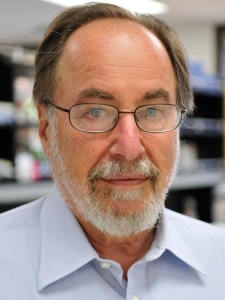 In the spring of 1998, civil-liberties lawyer and First Amendment advocate Harvey Silverglate had an idea: Why not single out enemies of free speech in the pages of The Boston Phoenix? Harvey was a Phoenix contributor; I was the media columnist. We refined Harvey’s idea and, at his suggestion, named them the Muzzle Awards — borrowing the name from the Thomas Jefferson Center for the Protection of Free Expression (now defunct) and restricting them to the Boston, Worcester, Portland and Providence areas, where we had papers.
In the spring of 1998, civil-liberties lawyer and First Amendment advocate Harvey Silverglate had an idea: Why not single out enemies of free speech in the pages of The Boston Phoenix? Harvey was a Phoenix contributor; I was the media columnist. We refined Harvey’s idea and, at his suggestion, named them the Muzzle Awards — borrowing the name from the Thomas Jefferson Center for the Protection of Free Expression (now defunct) and restricting them to the Boston, Worcester, Portland and Providence areas, where we had papers.
We decided on the Fourth of July for two reasons — first, to emphasize that the Muzzles were an expression of patriotism; second, so that the rest of the news staff could pretty much take the week off. The first annual Muzzle Awards were published on July 3, 1998. Among other winners, we singled out of the FCC for shutting down Radio Free Allston, a pirate station that served the community at a time when it was even harder to get a license for a low-power FM operation than it is today; the town of Plymouth, where police roughed up Native American protesters; and Walmart, for refusing to sell CDs that carried a parental warning label.
The Muzzles turned out to be a hit. David Brudnoy and, later, Dan Rea would have me on to talk about them on WBZ Radio (AM 1030) and — I’d like to think — we helped educate our readers about the importance of free expression.
I continued writing the Muzzles after leaving the Phoenix for Northeastern in 2005. At that point, I stopped singling out colleges and universities because I thought it would be a conflict of interest. Harvey began writing the Campus Muzzle Awards as a sidebar.
Then, in the spring of 2013, The Boston Phoenix closed abruptly, and we needed a new home for the Muzzles. Fortunately my friends at GBH News stepped up and have been hosting them ever since. Although The Worcester Phoenix was long gone at that point, the Muzzles continued to appear in the Providence and Portland papers until they, too, shut down. (The Portland Phoenix was revived a couple of years ago under new ownership and appears to be doing well.) And here’s a pretty astonishing fact: Peter Kadzis has been editing the Muzzles from the beginning, first at the Phoenix, now at GBH.
This year’s New England Muzzle Awards, published on July 1, are, like their predecessors, a reflection of the era. The Black Lives Matter protest movement that was revived after the police killings of George Floyd and Breanna Taylor figure in several of the awards — from Boston and Worcester police officers who brutalized peaceful demonstrators, to racial justice protesters in Burlington, Vermont, who stole and destroyed copies of a newspaper whose coverage they were unhappy with, to Sheriff Scott Kane of Hancock County, Maine, who banned a desperately needed drug-counseling service from his jail after the nonprofit posted a statement on its website in support of Black Lives Matter.
We have some well-known winners, too, including Secretary of Labor Marty Walsh, Fox News talk-show host Tucker Carlson and former President Donald Trump. The town of Plymouth is back as well — this time for threatening punitive fines against a Trump supporter who’d put a sign critical of President Joe Biden on his lawn.
This is the 24th year of Muzzle Awards, so next year will be a landmark. Will they continue after their 25th anniversary? Right now I couldn’t tell you. I have put together an index of all 24 years in case you’re interested in what previous editions looked like. Link rot had claimed some of them, but I was able to overcome that thanks to the Internet Archive.
The animating spirit of the Muzzles was best expressed by Supreme Court Justice Oliver Wendell Holmes Jr. in 1929: “If there is any principle of the Constitution that more imperatively calls for attachment than any other, it is the principle of free thought — not free thought for those who agree with us but freedom for the thought that we hate.”
It’s been a long ride — and I’ve already got a candidate for the 2022 edition.
This post was sent out last Friday, June 9, as part of the Media Nation member newsletter. If you would like to become a member, just click here. The cost is $5 a month.







